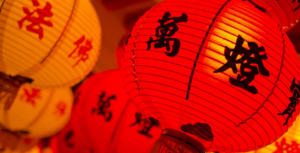How To Position Product Style & Packaging Design Direction?
In today’s highly competitive market, product positioning, style, and packaging design are crucial elements of successful branding. By conducting in-depth analysis of competitors, target users, brand attributes, and product characteristics, as well as close collaboration with design teams and clients, we can provide clear direction for product positioning and captivating packaging design. Today, we share key methods and steps to help achieve successful product positioning and appealing packaging design.

Best Methods To Position Product Style & Packaging Design Direction
Step 1
Analyze Competitors and Target Users When determining product style and packaging design direction, the first step is to thoroughly research packaging design, positioning, and style of similar products to identify their distinct features and differences. Simultaneously, understanding the attributes, needs, and aesthetic trends of the target users is crucial. Through this research, we can define the product’s market positioning, ensuring its differentiation from competitors and alignment with the target users’ preferences.
Step 2
Analyze Brand Attributes and Core Values The brand is the cornerstone of product success; hence, examining brand attributes, history, and business models is essential. In this step, we need to ascertain the brand’s core values and the spiritual factors to convey to users, enabling us to grasp the brand’s DNA. The core values of the brand will guide the expression of product style and packaging design, ensuring consistent and impactful communication to consumers.
Step 3
Study Product Attributes and Usage Scenarios Understanding the physical attributes, usage characteristics, and scenarios of the product is key to positioning product style and packaging design direction. Clearly defining the functional and visual aspects to emphasize in the custom packaging design will enable its effective representation. Considering the product’s use in various scenarios will better meet user needs and expectations.
Step 4
Communicate with Design Teams and Clients Engaging in effective communication with design teams and clients is a valuable method to achieve product positioning and design style. Through discussions with the design team, gathering additional insights and suggestions, we can collaboratively outline feasible product positioning and design style. Additionally, listening to client feedback and opinions ensures that product positioning and design style align with their expectations.
Step 5
Summarize Product Positioning and Design Style Key Points Based on the research and communication mentioned above, summarize the core content of product positioning and the main expression points of the design style. Clarify the information to be conveyed through product positioning, style, and packaging design, providing clear guidance and direction for subsequent design work.
Tip For Product Style & Packaging Designing
Determining the core considerations for design involves product attributes, brand style, target users, competitor analysis, and manufacturing technology. These elements directly impact the success of the product and should be thoroughly taken into account during the design process.
- Product Attributes: Firstly, the design core needs to closely focus on the product’s functionalities and target positioning. The product’s functionalities determine its usage scenarios and competitive advantages. The design should highlight and reflect the key functional features, ensuring visual alignment with the product’s capabilities. Moreover, the product’s target positioning defines the specific market and audience it aims to cater to. The design should be aligned with the target market, attracting and meeting the needs and expectations of the intended users.
- Brand Style: The brand’s established visual communication approach is a crucial factor that cannot be overlooked during the design process. The design should remain consistent with the brand’s style to maintain brand identity and consistency. This might encompass color schemes, icons, fonts, typography, and more. Skillfully incorporating brand elements into the design ensures that the product possesses brand recognition in the market.
- Target Users: Understanding the aesthetic preferences and information habits of the target users is essential for design. The design should align with the target users’ aesthetic tastes and cultural backgrounds, increasing the product’s appeal to them. Furthermore, understanding the target users’ information consumption habits and purchasing behaviors helps optimize product messaging and packaging design, allowing for better resonance with the intended audience.
- Competitor Analysis: Learning from common design approaches in competitor packaging is a valuable resource. Analyzing competitors allows understanding market design trends and successful cases, providing useful elements for inspiration and absorption. However, it is crucial to avoid blindly imitating competitors. Instead, by incorporating the strengths of competitors and combining them with unique characteristics, the design can create a distinctive identity that sets the product apart in a competitive market.
- Manufacturing Technology: Practical considerations for production are also essential. Design feasibility and manufacturability directly influence product costs and quality. During the design phase, a full understanding of the adopted manufacturing technology and close collaboration with engineering and production teams ensure that the design can smoothly transition into an actual product.
Throughout the entire design process, these considerations interact and complement each other, forming the core of product design. By comprehensively considering these elements, the design team can develop exceptional product design solutions that are competitive in the market, consistent with the brand, and cater to the needs of the target users.


Top 10 Creative Cosmetic Packaging Design Ideas & illustrations 2023 | Luxury-Paper-Box.Com

10 Customs Of The Spring Festival (Lunar New Year) You Need To Know

Top 10 Best Lattafa Perfumes for Women & Men in 2024

Top 10 Best Packaging Design Software 2023 (Free & Paid)

Best Chocolate Packaging Designs of 2025

Natural Concept Perfume Design Ideas: Tell Your Brand Story



 kali@luxury-paper-box.com
kali@luxury-paper-box.com



